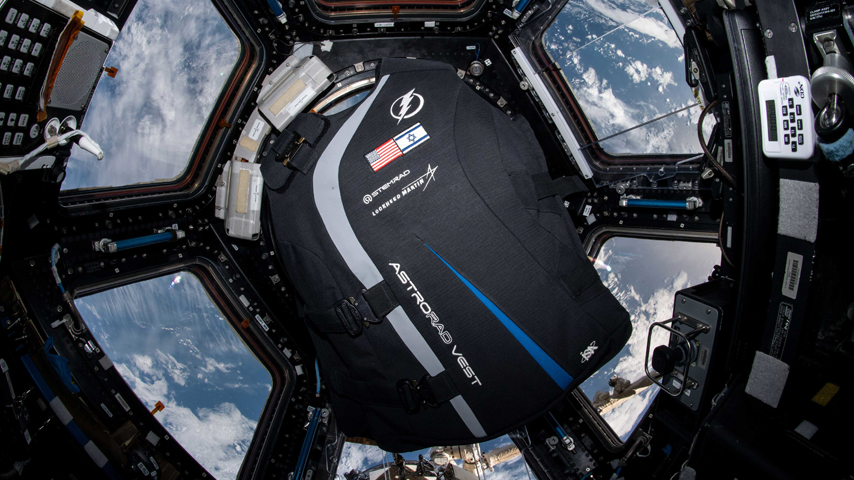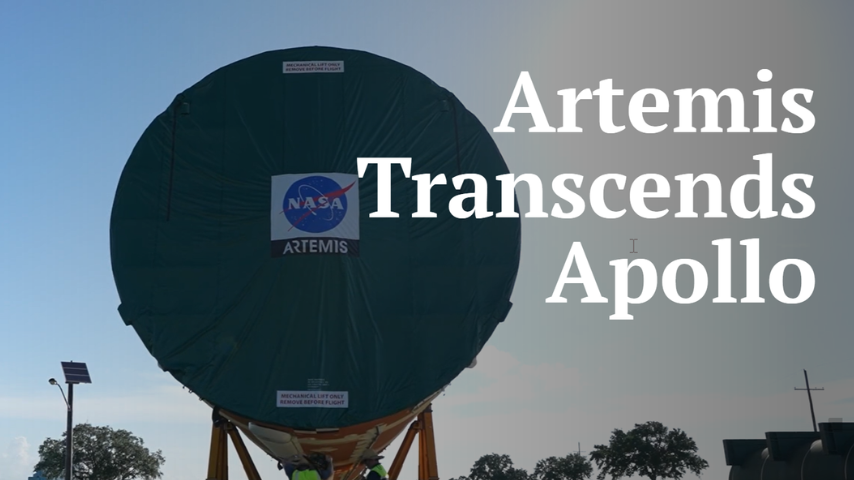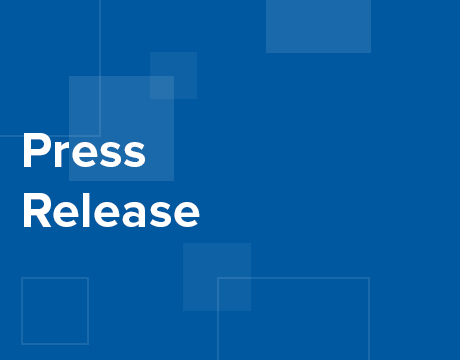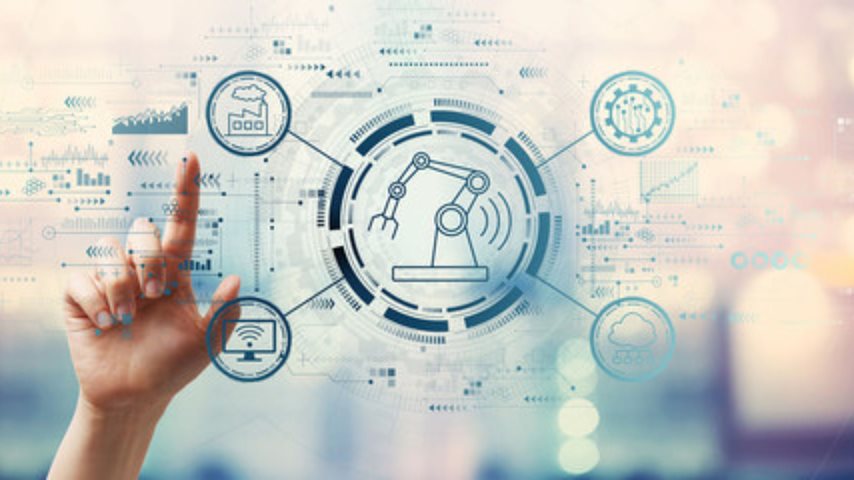ISS-Tested Vest Could Safeguard Astronauts from Solar Particle Events
ISS-Tested Vest Could Safeguard Astronauts from Solar Particle Events


The AstroRad vest in the Cupola module onboard the space station.
Crew members on spacecraft outside low earth orbit risk encountering a solar particle event (SPE) due to an eruption from the sun. The radiation from such storms could be the equivalent of 1,000 X-rays, increasing the likelihood of developing cancers and even causing acute radiation syndrome (ARS).
The AstroRad is a vest that significantly decreases the exposure levels during solar particle events while practically eliminating the possibility of ARS. It does not protect from all radiation in space, though—especially galactic cosmic rays. The vest is a redesign of an equivalent model made for protection in nuclear power plants. The project is a collaboration between Israeli-American startup StemRad and Lockheed Martin, which was looking for a solution to solve deep-space radiation concerns for crews for NASA’s Artemis mission and future space endeavors.
The nuclear-first responder solution that StemRad designs and manufactures is a belt that protects the pelvis area, which is where most of the body’s active bone marrow is located.
“When it comes to acute radiation syndrome, it’s especially important to protect the bone marrow because it is both very sensitive to radiation and also very important for survival through stem cells. If you can shield even a small fraction of the bone marrow, it can recover,” said Jordan Houri, lead scientist at StemRad.
In adapting the nuclear responder protection equipment for use in outer space, the team first had to consider the differences in radiation threat between the two scenarios. “On Earth, we’re mainly concerned with gamma radiation caused by radioactive decay of heavy radioactive particles. These are man-made scenarios, like you would find in a nuclear reactor or potentially after a nuclear bomb explosion,” Jordan said. In space, on the other hand, “pretty much all the radiation is charged particle radiation,” he added.
 While the damage from both kinds of radiation is similar, the differing compositions of the fallout necessitate slight variations in the design and composition of protective gear. For deep space use, you want materials with a lot of hydrogen, which is about twice as effective as any other element in shielding against charged particle radiation, Jordan said.
While the damage from both kinds of radiation is similar, the differing compositions of the fallout necessitate slight variations in the design and composition of protective gear. For deep space use, you want materials with a lot of hydrogen, which is about twice as effective as any other element in shielding against charged particle radiation, Jordan said.
The team decided on high-density polyethylene (C2H4)n as the material for the AstroRad. In addition to an abundance of hydrogen, it is also solid and easier to work with, Jordan added. “We shifted away from materials that are specific for blocking photons toward materials that are more applicable for space radiation, which is composed mostly of particles, not photons,” said Oren Milstein, CEO and chief scientific officer at StemRad.
Kathleen Coderre, engineer at Lockheed Martin and principal investigator of the project, said the StemRad-Lockheed Martin partnership worked really well because they could take a “terrestrial product and test it in the environment of space.” Lockheed Martin brought its know-how of engineering products for space and the NASA process.
“In the space environment you can afford a bit more coverage because you’re trying to protect a lot more of the vital organs that are susceptible to radiation-induced problems,” Coderre said. As a result, selective shielding for nuclear and outer space use cases are different.
The vest for outer space, which weighs around 22 kilograms, goes beyond covering just the pelvis area to protect other radiation-sensitive organs like the lungs, stomach, ovaries, and breast tissue, but would be impractical for nuclear responders due to the gravity here on Earth.
The team had to overcome a few engineering challenges. “You’re trying to figure out how to optimize it to provide enough coverage to help reduce the overall radiation dosage while understanding that you’re never going to get it to zero,” Coderre said.
Design for practical human use was also important. “The challenge was how do we design something that provides protection while also making it mobile enough so you can wear and operate it in the environment so that it’s not going to be restricting movement or chafing or creating other headaches,” Coderre said.
To make the vest fit a range of astronaut sizes, the AstroRad has buckles for adjustment and is designed as a series of removable panels, which provide flexibility.
The ISS National Laboratory sponsored the team’s experiment to have the vest flown and tested on the International Space Station. “The whole goal there was to test the form, fit, and function of the initial prototype on a number of different crew members doing everyday tasks and then getting feedback on what worked and what didn’t,” Coderre said. These tests led to further adjustments, including pockets and Velcro patches on which to “stick” objects so they don’t float away.
The vest was also tested on Artemis I. “Based on the results from the Matroshka AstroRad Radiation Experiment (MARE) on Artemis I, the vest outperformed our original predictions by 33 percent, and would have reduced radiation exposure by around 60 percent if a solar particle event such as the August 1972 solar storm had occurred during the mission,” Jordan said.
The 1972 solar storm occurred in between the final two Apollo missions and is considered to be the most severe in terms of potential effects on human health. “Based on NASA’s current dose limits, we found that in such scenarios, wearing the vest could extend astronauts’ spaceflight careers by up to 190 days,” he said.
“[The AstroRad project] ended up being a great partnership where we were able to help this small business bring a product to market that would benefit not only Artemis, but all future human exploration, to the moon, Mars, and beyond,” Coderre said. “Everyone was very mission-oriented on wanting to solve this problem of solar particle radiation.”
Poornima Apte is a technology writer based in Walpole, Mass.
The AstroRad is a vest that significantly decreases the exposure levels during solar particle events while practically eliminating the possibility of ARS. It does not protect from all radiation in space, though—especially galactic cosmic rays. The vest is a redesign of an equivalent model made for protection in nuclear power plants. The project is a collaboration between Israeli-American startup StemRad and Lockheed Martin, which was looking for a solution to solve deep-space radiation concerns for crews for NASA’s Artemis mission and future space endeavors.
Modifying nuclear responder protection
The nuclear-first responder solution that StemRad designs and manufactures is a belt that protects the pelvis area, which is where most of the body’s active bone marrow is located.“When it comes to acute radiation syndrome, it’s especially important to protect the bone marrow because it is both very sensitive to radiation and also very important for survival through stem cells. If you can shield even a small fraction of the bone marrow, it can recover,” said Jordan Houri, lead scientist at StemRad.
In adapting the nuclear responder protection equipment for use in outer space, the team first had to consider the differences in radiation threat between the two scenarios. “On Earth, we’re mainly concerned with gamma radiation caused by radioactive decay of heavy radioactive particles. These are man-made scenarios, like you would find in a nuclear reactor or potentially after a nuclear bomb explosion,” Jordan said. In space, on the other hand, “pretty much all the radiation is charged particle radiation,” he added.

Artemis Transcends Apollo
NASA’s ambitious Artemis program aims to land astronauts on the lunar surface: The engineering is out of this world. Read all about it in ME Magazine.
The team decided on high-density polyethylene (C2H4)n as the material for the AstroRad. In addition to an abundance of hydrogen, it is also solid and easier to work with, Jordan added. “We shifted away from materials that are specific for blocking photons toward materials that are more applicable for space radiation, which is composed mostly of particles, not photons,” said Oren Milstein, CEO and chief scientific officer at StemRad.
Engineering and design challenges
Kathleen Coderre, engineer at Lockheed Martin and principal investigator of the project, said the StemRad-Lockheed Martin partnership worked really well because they could take a “terrestrial product and test it in the environment of space.” Lockheed Martin brought its know-how of engineering products for space and the NASA process. “In the space environment you can afford a bit more coverage because you’re trying to protect a lot more of the vital organs that are susceptible to radiation-induced problems,” Coderre said. As a result, selective shielding for nuclear and outer space use cases are different.
The vest for outer space, which weighs around 22 kilograms, goes beyond covering just the pelvis area to protect other radiation-sensitive organs like the lungs, stomach, ovaries, and breast tissue, but would be impractical for nuclear responders due to the gravity here on Earth.
The team had to overcome a few engineering challenges. “You’re trying to figure out how to optimize it to provide enough coverage to help reduce the overall radiation dosage while understanding that you’re never going to get it to zero,” Coderre said.
Design for practical human use was also important. “The challenge was how do we design something that provides protection while also making it mobile enough so you can wear and operate it in the environment so that it’s not going to be restricting movement or chafing or creating other headaches,” Coderre said.
To make the vest fit a range of astronaut sizes, the AstroRad has buckles for adjustment and is designed as a series of removable panels, which provide flexibility.
Test driving the AstroRad
The ISS National Laboratory sponsored the team’s experiment to have the vest flown and tested on the International Space Station. “The whole goal there was to test the form, fit, and function of the initial prototype on a number of different crew members doing everyday tasks and then getting feedback on what worked and what didn’t,” Coderre said. These tests led to further adjustments, including pockets and Velcro patches on which to “stick” objects so they don’t float away. The vest was also tested on Artemis I. “Based on the results from the Matroshka AstroRad Radiation Experiment (MARE) on Artemis I, the vest outperformed our original predictions by 33 percent, and would have reduced radiation exposure by around 60 percent if a solar particle event such as the August 1972 solar storm had occurred during the mission,” Jordan said.
The 1972 solar storm occurred in between the final two Apollo missions and is considered to be the most severe in terms of potential effects on human health. “Based on NASA’s current dose limits, we found that in such scenarios, wearing the vest could extend astronauts’ spaceflight careers by up to 190 days,” he said.
“[The AstroRad project] ended up being a great partnership where we were able to help this small business bring a product to market that would benefit not only Artemis, but all future human exploration, to the moon, Mars, and beyond,” Coderre said. “Everyone was very mission-oriented on wanting to solve this problem of solar particle radiation.”
Poornima Apte is a technology writer based in Walpole, Mass.




